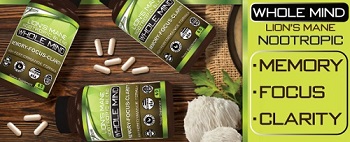How Can You Trademark an AI-Created Logo or Name?
The Rise of AI-Generated Brands: Can You Trademark an AI-Created Logo or Name?
We are all probably well aware that artificial intelligence has revolutionised many creative industries. Logos, brand names, social media posts, and now entire brand identities can be created with just a few clicks of the mouse using AI. This technology has many advantages and disadvantages. Perhaps the biggest advantage is that it is faster and cheaper to build a brand than ever before. But it raises an important legal question: who owns an AI-created logo? After all, we know that AI works on the basis of resources found on the internet, which, after all, were created by a human. Is it possible to trademark a logo or brand name created by AI? Let’s see what bonamark.com says.
Bonamark is an international trademark registration services company that helps businesses protect their brand at a legal level. The company also offers legal support in the research, registration and maintenance of trademarks, providing clients with a full service to ensure that their brand is legally protected.
Who Owns the Ownership of an AI-Created Logo or Brand Name?
This is a complex issue, but we will try to briefly summarise the most important facts. A trademark is usually created for man-made creations. Yes, most legal systems state that copyright protection requires that it is created by man. This is the biggest problem with AI-generated content. Since the algorithm is not a person, it cannot be the owner of copyright. The question is rather in this case whether the user who created any content with the help of AI can claim ownership or not.
Under current law, a user can claim copyright if there is significant human intervention in the content created by AI. However, if there has been a small amount of interference, this may be problematic from a copyright perspective.
This raises the next question of what constitutes significant editing…
Can an AI-Generated Logo or Name Be Trademarked?
Trademarks are symbols, words or design elements that are used to identify a brand. The purpose is to distinguish a business from other businesses. And, if necessary, to provide legal protection for the brand against theft of the content they create. For example, an AI-generated logo or brand name could in theory be trademarked, but with conditions.
The US Patent and Trademark Office, for example, examines whether or not a logo or name is eligible for trademarking. If the AI-generated logo is completely unique and no other similar logo exists, there may be a chance of a successful registration. However, if the AI has copied and modified an existing logo, the offices may reject the application for trademark registration.
Another huge question about AI-generated content is who owns the trademark rights. If you, as an entrepreneur, decide to use an AI tool to create, for example, your logo, you will need to decide how you will prove your ownership. Legal experts say it is worth documenting the creative process of your business, showing the steps where human editing is clearly visible.
How Can You Defend an AI-Generated Brand?
If you’re planning to trademark your brand, content or logo that’s been AI-generated, there are several things you should look out for in your preparations.
For example, if you are creating a logo or name using AI, you should manually develop or modify it so that the finished product is not entirely AI-generated. This can help you to obtain legal protection. Are you producing text content? Same process: take a screenshot or screenshot of what content the AI has created for you, and then record what changes you’ve made. If it’s a course or book text, for example, you’ll definitely benefit from a trademark to prevent your text from being stolen, even if it was based on AI.
Always document this process – as mentioned above, take notes, screenshots of when and what changes you made. This can help you to prove to the auditors that human editing has actually taken place, and you didn’t just do one little change. These details are very important when you want to get an official trademark registration.
If you need help, you should consult a legal expert who can help you find out what else you need to do to have a better chance of getting your creative content trademarked.
Summary
Artificial intelligence is becoming an increasingly common part of the creative industries, and it is to be expected that legal regulation will fully adapt to this change over time. It is possible that a separate category will be created for AI-generated content, providing an “intermediate” solution to the issue of legal protection.
For the time being, however, there are legal challenges to trademarking AI-generated content, but the advice in this article could help you to obtain a trademark to protect your brand.










